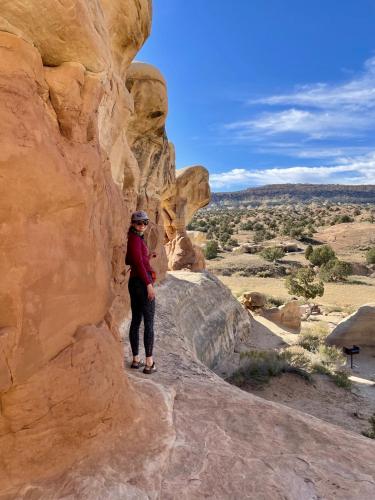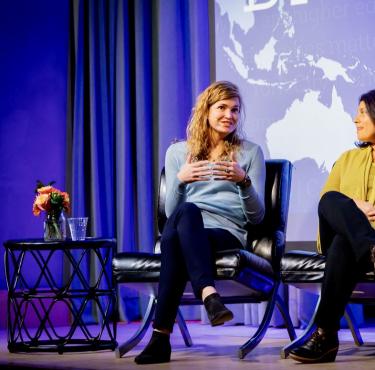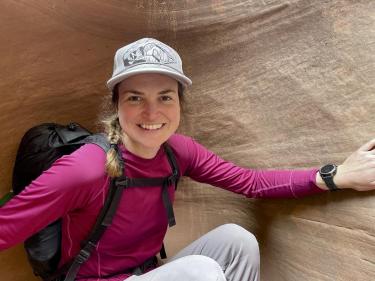 I graduated from CU with a PhD in Geography in December 2019. My dissertation research combined approaches from natural hazards, climate adaptation, political ecology, and science and technology studies (STS) to understand why emerging environmental and climatic hazards remain invisible and unmanaged. Specifically, I explored how and why western dust storms go undetected by regulatory monitoring despite carrying many social and environmental consequences. This research led me to follow scientists in the field as they collected (or didn’t collect) dust data, strapping on skis with avalanche forecasters, traversing field sites in the red rock desert, hiking up ridgelines to high elevation dust monitors, analyzing particles in the lab, and shadowing regulators as they updated air quality monitors. In the end, I was left with just as many questions as I started with, but the work also led to publications about the politics of environmental knowledge in Geoforum, Society and Natural Resources, and the Annals of American Geographers.
I graduated from CU with a PhD in Geography in December 2019. My dissertation research combined approaches from natural hazards, climate adaptation, political ecology, and science and technology studies (STS) to understand why emerging environmental and climatic hazards remain invisible and unmanaged. Specifically, I explored how and why western dust storms go undetected by regulatory monitoring despite carrying many social and environmental consequences. This research led me to follow scientists in the field as they collected (or didn’t collect) dust data, strapping on skis with avalanche forecasters, traversing field sites in the red rock desert, hiking up ridgelines to high elevation dust monitors, analyzing particles in the lab, and shadowing regulators as they updated air quality monitors. In the end, I was left with just as many questions as I started with, but the work also led to publications about the politics of environmental knowledge in Geoforum, Society and Natural Resources, and the Annals of American Geographers.
After my graduate work, and right before the global pandemic turned the world upside down, I started a postdoctoral fellowship at the USGS Social and Economic Analysis Branch, where I served as one of two social science leads on a federal taskforce developing the new Resist-Assist-Direct (RAD) framework to help land managers respond to ecological transformation. In this role, I helped guide federal land and resource management policy for National Parks, National Refuges and other federal lands and coproduced research projects to improve resource management policy. Increasingly, public land managers are confronting difficult decisions about ecological transformation, when a system shifts in state or function. For example, my research explored manager decision making on the Kenai Peninsula where wildfires and beetle outbreaks lead a boreal forest to convert to a grassland, complicating resource management. What should a manager do when their landscape doesn’t match their management plans? How much and in which ways should they intervene in landscape level changes? What are the consequences of these management decisions for the people who use and rely on public lands?

 Recently I accepted a new position as the social scientist at Western Water Assessment, an applied research program at CU Boulder, where I will focus on building resilience and supporting climate adaptation efforts in frontline communities across Colorado, Wyoming, and Utah. Western Water Assessment is a Regional Integrated Science Assessment (RISA) program funded by the National Oceanic and Atmospheric Administration (NOAA). Eleven RISAs are spread across the US and hosted at universities (like CU) with the goal of connecting stakeholders and decision makers with actionable science to build
Recently I accepted a new position as the social scientist at Western Water Assessment, an applied research program at CU Boulder, where I will focus on building resilience and supporting climate adaptation efforts in frontline communities across Colorado, Wyoming, and Utah. Western Water Assessment is a Regional Integrated Science Assessment (RISA) program funded by the National Oceanic and Atmospheric Administration (NOAA). Eleven RISAs are spread across the US and hosted at universities (like CU) with the goal of connecting stakeholders and decision makers with actionable science to build  resilience and support climate adaptation. Core to their work and approach to research is building partnerships with stakeholders to co-produce projects in ways to prioritize reciprocity and give partners a seat at the table to shape and direct research about their community. In this position, I get to flex my geography muscles by bringing together physical geography (to understand the influence of climate change on natural hazards and resources), spatial data and mapping (to track patterns of impacts), and critical theories from human geography (to understand power, structural drivers, and inequality). As in my position at USGS, I get to keep a foot in both the academic research sphere, asking big questions about human-environment interactions, as well as the applied sphere, contributing to tangible outcomes for communities experiencing climate impacts.
resilience and support climate adaptation. Core to their work and approach to research is building partnerships with stakeholders to co-produce projects in ways to prioritize reciprocity and give partners a seat at the table to shape and direct research about their community. In this position, I get to flex my geography muscles by bringing together physical geography (to understand the influence of climate change on natural hazards and resources), spatial data and mapping (to track patterns of impacts), and critical theories from human geography (to understand power, structural drivers, and inequality). As in my position at USGS, I get to keep a foot in both the academic research sphere, asking big questions about human-environment interactions, as well as the applied sphere, contributing to tangible outcomes for communities experiencing climate impacts.
I am also developing a few new projects at WWA at the intersection of climate impacts and equity. One explores intersection between housing affordability and climate adaptation, engaging these tensions in the aftermath of the recent Marshall Fire in Boulder County, and partnering with Resident-Owned Manufactured Housing Communities who are often exposed to greater climate risk than other housing types. Another builds off my graduate work, examining a broader suite of air quality issues (like wildfire smoke) and further investigating the politics of environmental monitoring. To support and guide the work of WWA, I am developing resilience indicators and metrics to track the impact of our science and better connect resilience theory with practice. With such a large list of important work, and very geographic work, I am always looking for more collaboration, especially from current geography students interested in engaged work on climate impacts.
